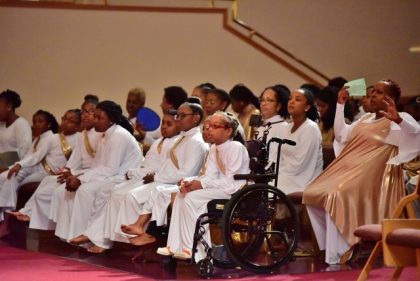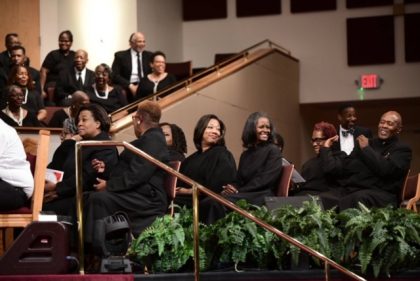
Last week my son had a horrible time in school. He’s been extremely frustrated because other children don’t include him in basketball and soccer during recess. My son is highly functioning autistic, and for many years he didn’t care if other children wanted to play with him. Most of the time, he wandered around by himself in his own world. Now, he’s reached a point where he wants to be included, and it hurts him tremendously when children tell him to go away. He doesn’t understand why they don’t want to play with him. My son doesn’t know or think he’s different from other children. He doesn’t understand that some of his behaviors appear quirky to them, and he’s been lashing out as a result. He has a strong desire to be included.
Last Sunday I was pleasantly surprised at church when the dance ministry, comprised of all ages and both sexes, stood to dance. One of the dancers is a little girl in a wheelchair. To watch her dance you wouldn’t think the wheelchair is holding her back in any way because the spirit in her movements and the bright smile on her face lit up the sanctuary. A few people honed in on her like myself, but mostly, people were pleasantly surprised that she was included despite her being in a wheelchair.
Sesame Street does a good job of teaching inclusion.
“Jesus said, ‘Let the little children come to me, and do not hinder them, for the kingdom of heaven belongs to such as these’” Matthew 19:14 (NIV).
Jesus said in Matthew 19:14 let the children come to him when the disciples tried to push them away from Jesus. I know we can insert those persons whom we deem outcasts or on the outskirts of society and our cliques and allegiances. Jesus would say the same to those persons, “Let them come for such as these belong the kingdom of heaven.” God’s ways are not our ways and although we may not like someone or think they belong outside the gate, God welcomes them in.
That’s why I believe it’s imperative that parents teach children inclusion. I know how my son’s heart hurts when he’s not included and left alone, so I know other children are suffering. We have to be intentional about teaching children about conditions like autism and different abilities. I’m thankful my church is being intentional on the dance ministry and in other ministries that assist persons with special needs. There are too many children suffering because they are left out in school, sometimes in their families and in the community. Some are even taking their own lives because of it.
You can teach inclusion by modeling it to your children. Treat everyone with respect and dignity despite differences. Live by the Golden Rule. Do unto others as you would have them do unto you. Research children’s books that teach about different conditions such as autism and disabilities. Be intentional in teaching your children to reach out to children who seem to be left out of activities and friend circles at school. Let children know that no act of kindness is ever too small, but can make a world of difference in someone’s life.
Teaching inclusion to your children is reminding them that even if someone looks different from them, it doesn’t make them any less deserving of love or attention. It’s imperative that you teach your children to be kind, rather than to tease their peers simply for looking different.
For example, some children may need tele audiology and as a result, a hearing aid. Teaching your child that someone with a hearing aid makes them no different from other children is just one way to help with inclusion.

